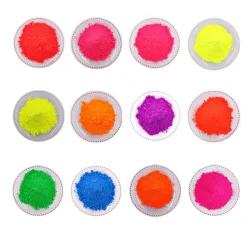Key pigments found in the human body
2024-04-25
In the human body, pigments are substances responsible for giving color to various tissues, organs, and structures. These pigments are produced either naturally within the body or obtained from external sources such as food and environmental factors. Here are some of the key pigments found in the human body:
1. Melanin:
- Melanin is the primary pigment responsible for determining the color of human skin, hair, and eyes.
- It is produced by melanocytes, specialized cells located in the basal layer of the epidermis (outer layer of the skin), as well as in other parts of the body such as the eyes and hair follicles.
- Melanin comes in two main forms: eumelanin (brown-black pigment) and pheomelanin (yellow-red pigment). The ratio and distribution of these two types of melanin determine an individual's skin, hair, and eye color.
2. Hemoglobin:
- Hemoglobin is a protein found in red blood cells that is responsible for transporting oxygen from the lungs to the body's tissues.
- It contains a heme group, a complex molecule that contains iron and gives blood its red color when oxygenated.
- The color of blood can vary depending on its oxygenation state: oxygenated blood appears bright red, while deoxygenated blood appears darker red or bluish-purple.
3. Bilirubin:
- Bilirubin is a yellow pigment produced during the breakdown of hemoglobin in red blood cells.
- It is processed by the liver and excreted in bile, which gives feces its characteristic brown color.
- Elevated levels of bilirubin in the blood can result in jaundice, a condition characterized by yellowing of the skin and eyes.
4. Carotenoids:
- Carotenoids are a group of pigments found in fruits, vegetables, and other plant-based foods.
- Some carotenoids, such as beta-carotene, are converted into vitamin A in the body and play a role in maintaining healthy vision, skin, and immune function.
- Carotenoids can also accumulate in the skin, giving it a yellow-orange hue, especially in individuals who consume large amounts of carotenoid-rich foods.
5. Bile Pigments:
- Bile pigments are compounds derived from the breakdown of heme in old red blood cells and are excreted in bile by the liver.
- The main bile pigments are bilirubin and biliverdin, which give bile its yellow-green color and contribute to the color of feces.
These are just a few examples of the pigments found in the human body and their roles in determining coloration in various tissues and fluids. The presence and distribution of these pigments contribute to the diversity of human appearances and are influenced by genetic, environmental, and physiological factors.



